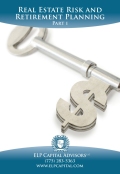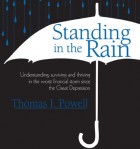Three Tips to Help You Avoid Stepping Face First into Real Estate Risk
Limiting risk in real-estate investments substantially increases your chances of earning high returns. A solid risk assessment prevents you from getting burned, losing your initial investment or much worse. Investors pick real estate for three main reasons: Earn positive cash flow, take advantage of tax benefits or gain the satisfaction of impacting the lives of others. No matter which combination of these reasons attracted you to the idea of investing in real estate, the following three tips can help you reduce risk and maximize your benefits.
- The first tip is simple, but often disregarded: Avoid speculation. In my book, “Standing in the Rain,” I describe speculation as “financial Russian roulette.” The odds can appear to be in your favor and the risk can often be downplayed in relation to the potential reward. Investors are seduced by speculation. They succumb to hearsay and promises of quick returns with little effort. Speculation is a short-term investment ploy and it minimizes real estate’s incredible potential as a long-term investment. Long-term investors look to retain their real-estate assets despite modest market fluctuations, short-term speculative investors become finicky when their asset does anything besides rise in value. Speculation is usually fueled by misinformation, greed or pseudo demand, and it does not have its place in the real-estate market. Forget about all things “get rich quick.” Wise real-estate investing requires thorough due diligence and I suggest you never let anyone convince you otherwise.
- Do your best to ensure positive cash flow. Being ill-prepared for a property that swallows cash every month can quickly reduce the amount of capital you have to work. Remember, cash is king, queen, prince and duke of Real Estate City. When possible, consider the benefits of a substantial down payment. It gives you instant equity, helps reduce your interest rate and lowers your monthly payments. Predicting constant appreciation is never easy. But, with experience or the assistance of a seasoned professional, you can take the necessary steps in an educated attempt to ensure positive cash flow. Lack of due diligence places a painful strain on your cash flow and forces you to sell your investment property before the benefits are realized.
- Narrow your focus. Which is the better choice for you, commercial or residential real estate? Investing in real estate carries a great potential for creating substantial wealth. Such wealth rarely comes without making a number of difficult decisions. Before investing, consider your options. Ask yourself if you are qualified, or even willing, to handle evictions, time management, repairs, reinvesting money back into the property, documentation and necessary inspections. Real estate can be mostly “hands off.” You can hire professionals to handle every part of the process, but the appeal of real-estate investing is often its “hands-on” nature. Narrowing your focus and choosing which type of real estate you want to invest in requires your careful consideration.
In “Real Estate Risk and Retirement Planning Part One,” I have included a section that details different options you have when investing in real estate. Watch for “Real Estate Risk and Retirement Planning Part Two” it in the next few weeks. I will discuss market trends and weeding through cumbersome rules and regulations.
All My Best,
Thomas J. Powell







